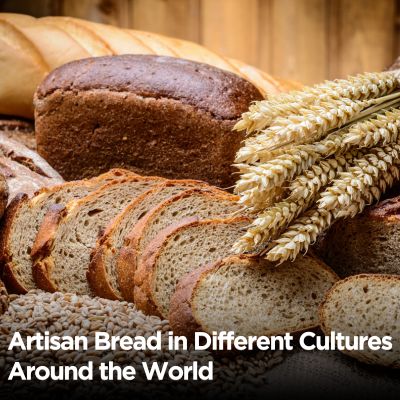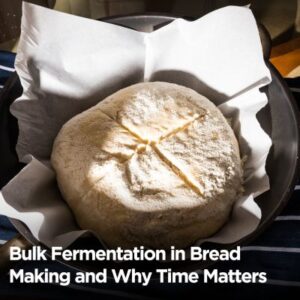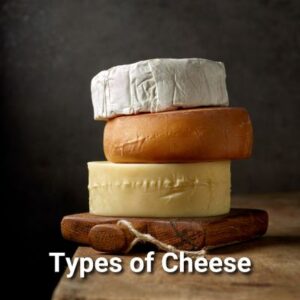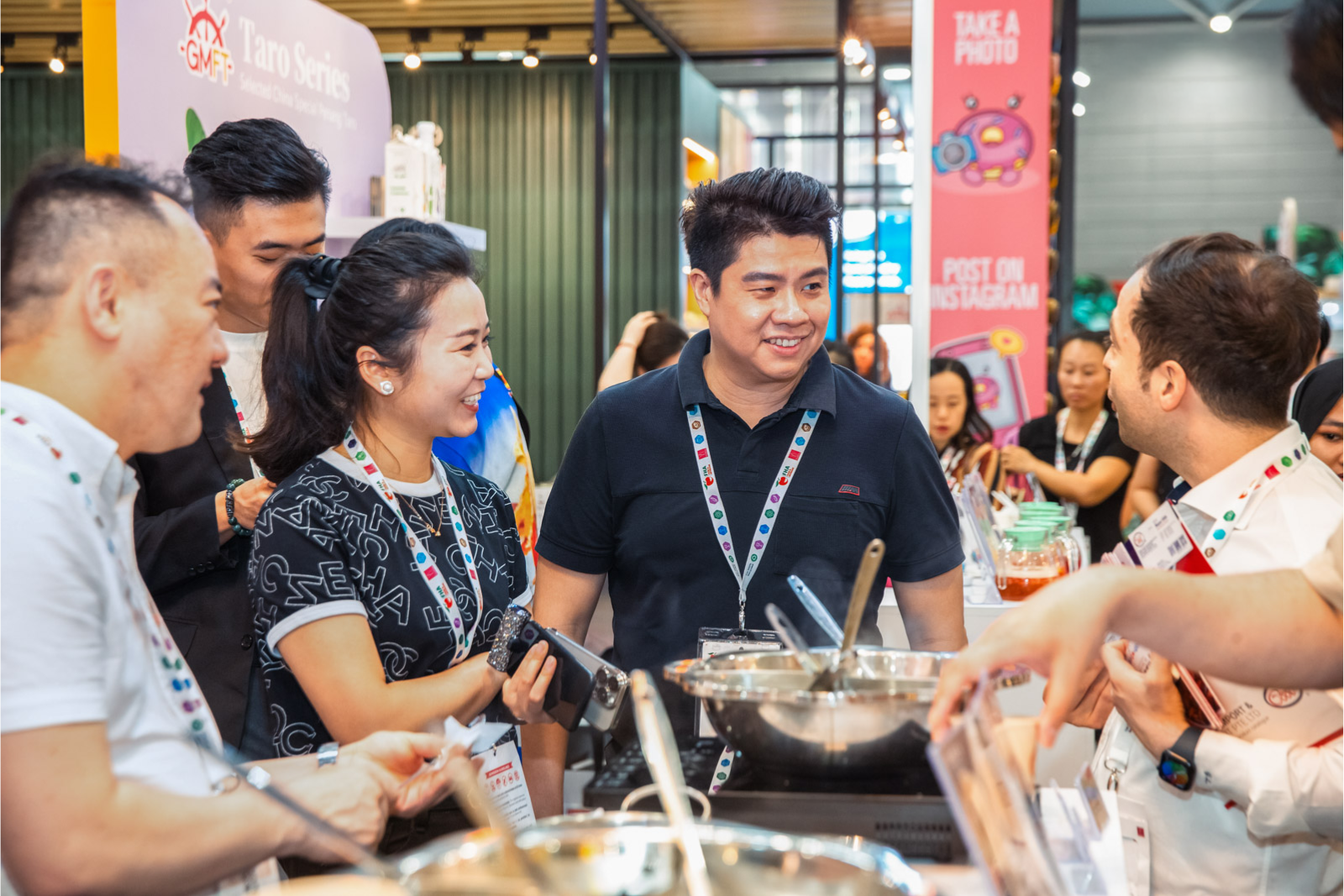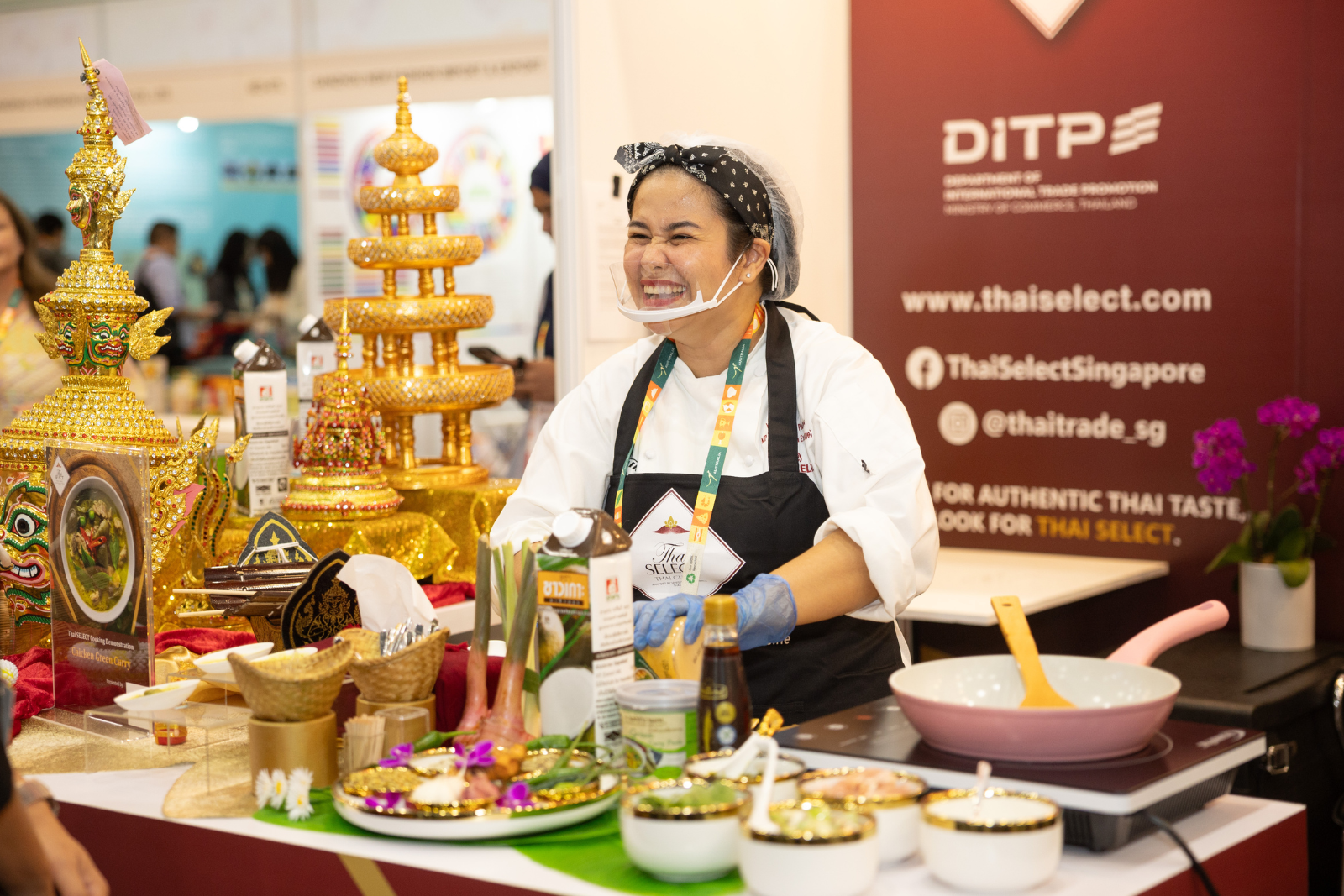Bread is one of the most familiar foods across the globe. It appears on tables in many forms, often shared during meals, used to scoop stews, or served alongside tea. Nearly every culture has a version of bread that is part of daily life, celebrations, and family traditions.
Artisan bread stands apart from factory-made versions. It is made by hand, using slow fermentation and simple ingredients like flour, water, salt, and natural leavening.
Many of these breads are made using traditional methods that have been passed down over time. The long preparation gives them a deep flavor, a strong crust, and a texture that cannot be rushed.
Every region has its own way of making bread, influenced by what grows locally, how people cook, and the customs that surround food. Some breads are thick and chewy, others are light and airy. Some are made in ovens, while others are cooked on hot stones or inside clay walls.
This article looks at artisan bread in different cultures, giving a glimpse into how people around the world prepare and enjoy one of the oldest and most beloved foods.
What Makes Bread ‘Artisan’ Across Cultures?
At its core, artisan bread is made by hand using time-tested methods that allow for longer fermentation and deeper flavor.
The ingredients are often simple, such as flour, water, salt, and a natural starter, but the process relies heavily on the baker’s skill, timing, and understanding of the dough. This kind of bread avoids additives or shortcuts, focusing instead on patience and careful handling.
Across the world, the same principles appear in different ways. In Europe, crusty sourdough loaves are left to rise slowly and baked in stone or wood-fired ovens.
In the Middle East, soft flatbreads are shaped and baked in clay ovens or on heated stones. Both methods involve a personal approach with minimal machinery, often outside a commercial kitchen.
Traditional artisan breads are often made from recipes that have been passed down through generations. These recipes continue to be used because they are part of daily life and cultural traditions.
Ingredients usually come from local sources, which gives each bread its own character. A dense rye loaf from Northern Europe will have a completely different taste and feel from an Ethiopian flatbread made with teff flour. The methods may vary, but the care and intention behind each bread remain consistent.
The interest in handmade bread continues to grow. In 2023, the global artisan bakery market was valued at $90.7 billion. It is expected to increase to $141.3 billion by 2032, showing a steady rise in appreciation for quality and tradition in baking.
Iconic Artisan Breads from Around the World
![]()
Across different regions, bread takes on many forms based on local grains, traditions, and baking methods. Some are thick and rustic, others light and chewy. These breads are part of daily life and often tied to cultural identity.
Here are a few notable examples that showcase the richness of global bread traditions:
1. France – Pain de Campagne and Baguette Tradition
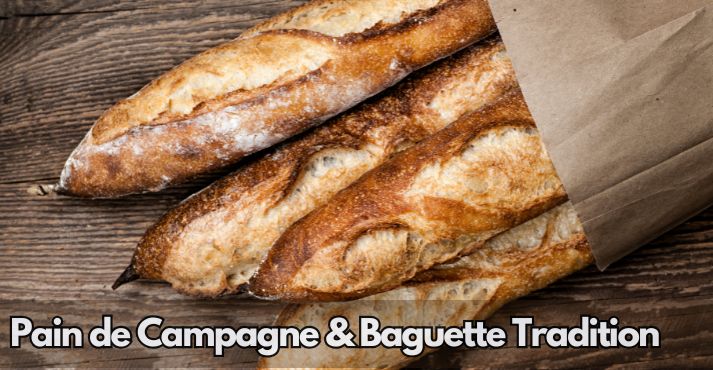
In France, bread is more than food — it is a daily essential. Two of the most respected examples are Pain de Campagne and Baguette Tradition.
Pain de Campagne, often called “country bread,” is a rustic sourdough that combines wheat flour with additions like rye or spelt. It usually relies on natural fermentation and is baked into large round loaves.
The crust is firm, and the crumb is open with a mild tang. Its flavor improves over time, making it a popular choice for longer storage and hearty meals.
Baguette Tradition is a protected term under French baking laws. Unlike standard supermarket baguettes, this version is made with only flour, water, salt, and yeast.
It requires a long fermentation process, often lasting 18 to 24 hours, resulting in a crisp, caramelized crust and a slightly nutty flavor.
These loaves are sold daily in neighborhood boulangeries and accompany most family meals, from breakfast with butter to evening cheese boards.
France’s love of bread runs deep. Each year, the country produces over 10 billion baguettes, making it one of the most famous breads in the world.
Home Recipe: Pain de Campagne (Basic Version)
Ingredients:
- 400g bread flour
- 100g rye flour
- 350ml water
- 100g active sourdough starter
- 10g salt
Steps:
- Mix the flours and water. Let it rest for 30 minutes.
- Add starter and salt. Mix thoroughly.
- Let rise for 4 to 6 hours, folding every 30 minutes for the first 2 hours.
- Shape into a round loaf. Proof for 2 hours or refrigerate overnight.
- Bake at 230°C in a Dutch oven for 45 minutes.
Home Recipe: Baguette Tradition (Crusty Version)
Ingredients:
- 500g bread flour
- 360ml water
- 3g dry yeast
- 10g salt
Steps:
- Combine flour, water, and yeast. Rest for 30 minutes.
- Add salt. Knead gently.
Bulk ferment 12 to 16 hours at room temperature. - Shape into baguettes. Let rest for 1 hour.
- Score with a blade and bake at 240°C with steam for 20-25 minutes.
2. Italy – Ciabatta and Pane Toscano
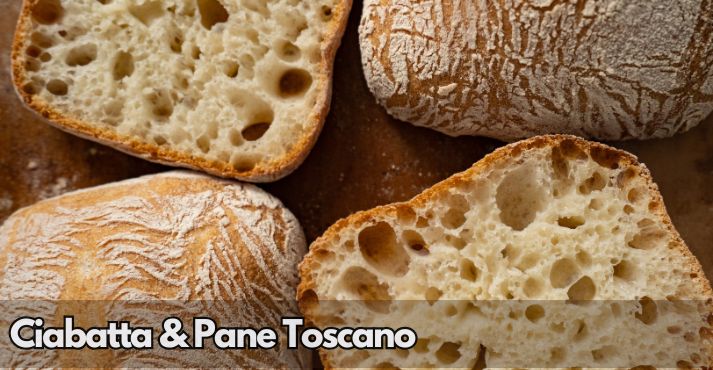
Italy’s regional diversity is reflected in its bread. Ciabatta and Pane Toscano originate from different traditions but share a common focus on simplicity and structure.
Ciabatta, meaning “slipper,” is known for its airy interior and thin, crisp crust. The dough is very wet, which helps develop large holes inside the loaf.
It was first created in the 1980s in response to French baguettes, but it quickly earned its place among traditional Italian breads. It pairs well with olive oil, cured meats, and tomato-based dishes.
Pane Toscano is completely unsalted, a style that dates back centuries of salt shortages and trade disputes.
The lack of salt brings out the grain’s natural flavor, making it ideal for pairing with salty Tuscan foods like prosciutto, pecorino cheese, and olive tapenade. The loaf is round with a chewy crust and soft interior.
These breads are still made daily in bakeries and patisseries throughout Italy and served with nearly every meal.
Home Recipe: Ciabatta
Ingredients:
- 500g bread flour
- 400ml water
- 5g dry yeast
- 10g salt
Steps:
- Mix all ingredients. The dough will be very sticky.
- Rest for 2 hours, folding gently every 30 minutes.
- Shape into flat rectangles.
- Rest on a floured surface for 45 minutes.
- Bake at 220°C for 20 to 25 minutes.
Home Recipe: Pane Toscano
Ingredients:
- 500g bread flour
- 350ml water
- 100g sourdough starter
- No salt
Steps:
- Mix flour, water, and starter.
- Knead the dough lightly and let it rise for 5 hours.
- Shape into a round loaf.
- Proof for 1 to 2 hours.
- Bake at 230°C for 40 to 45 minutes.
3. Germany – Volkornbrot and Bauernbrot

Germany’s bread culture is one of the most varied in the world, with thousands of regional types. Two well-known examples are Volkornbrot and Bauernbrot.
Volkornbrot is a dense, dark loaf made from whole grain rye and sometimes mixed with seeds. It is high in fiber and nutrients and often sliced thin.
The crumb is tight, moist, and slightly sour. It is usually eaten during breakfast or with open-faced sandwiches topped with meats, cheeses, or spreads.
Bauernbrot is a country-style bread made from a mix of rye and wheat. It is lighter than Volkornbrot but still has a firm crust and mild tang from the sourdough. The flavor is well-balanced and pairs nicely with both sweet and savory toppings.
In many households, it is served during Abendbrot, the traditional German evening meal focused on bread, cold cuts, and cheese. These breads remain staples of German diets and are closely tied to regional identity and seasonal customs.
Home Recipe: Volkornbrot
Ingredients:
- 400g rye flour
- 200g whole wheat flour
- 400ml water
- 150g sourdough starter
- 10g salt
- Optional: sunflower or pumpkin seeds
Steps:
- Mix ingredients into a sticky dough.
- Let rise in a covered bowl for 4 to 6 hours.
- Place in a greased tin. Proof for another hour.
- Bake at 200°C for 1 hour.
Home Recipe: Bauernbrot
Ingredients:
- 300g rye flour
- 300g bread flour
- 360ml water
- 100g sourdough starter
- 10g salt
Steps:
- Mix all ingredients until well combined.
- Rest the dough for 4 hours, folding every hour.
- Shape into a round or oval loaf.
- Proof for 1 to 2 hours.
- Bake at 230°C for 45 minutes.
4. Middle East – Pita and Barbari
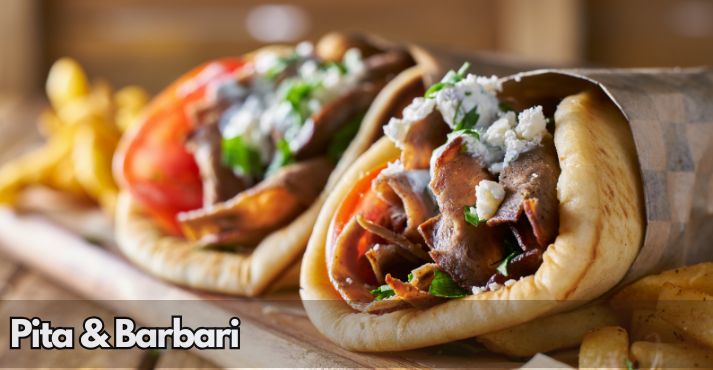
Bread is deeply woven into daily life across the Middle East. Among the most well-known are Pita and Barbari.
Pita is a soft, round flatbread baked at very high heat, which causes steam to puff the center and create a pocket.
It is commonly used for wraps or to scoop foods like hummus and grilled meats. It is one of the most recognizable elements in Middle Eastern cuisine and part of nearly every meal.
Barbari is a Persian flatbread that is thicker and chewier than pita. It is traditionally brushed with a flour paste before baking, which gives it a golden surface. Toppings often include sesame seeds, nigella seeds, or za’atar.
The bread is served hot, often with cheese, herbs, or sweet tea. Both Pita and Barbari are made in stone ovens or on hot metal surfaces, using methods passed down for generations.
These breads reflect hospitality, sharing, and community. They are also among the most widely recognized in global bread traditions.
Home Recipe: Pita Bread
Ingredients:
- 500g bread flour
- 320ml water
- 7g dry yeast
- 10g salt
Steps:
- Combine all ingredients and knead well.
- Let the dough rise for 2 hours.
- Divide into balls and roll flat.
- Bake on a preheated baking stone at 250°C for 4 to 5 minutes until puffed.
Home Recipe: Barbari Bread
Ingredients:
- 500g all-purpose flour
- 320ml water
- 5g dry yeast
- 10g salt
- Topping: flour paste, sesame seeds, nigella seeds
Steps:
- Mix flour, water, yeast, and salt. Rest for 1 hour.
- Stretch into long ovals with wet hands.
- Brush with flour paste and sprinkle toppings.
- Bake at 230°C for 15 to 20 minutes.
5. Mexico – Bolillo and Pan de Muerto
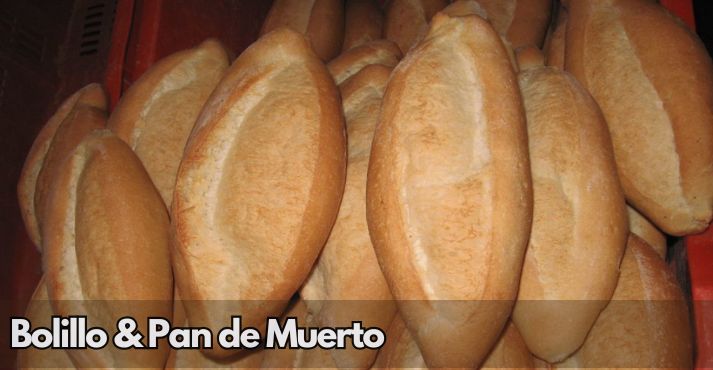
In Mexican cuisine, bread combines Old World methods with local tastes. Bolillo is a classic example. This crusty white roll was inspired by the French baguette and adapted during colonial times.
Today, it is commonly found in boulangeries and patisseries throughout Mexico, often displayed alongside sweet breads and seasonal specialties, such as Pan de Muerto.
It has a crisp exterior, a soft interior, and is commonly sliced open and filled to make tortas — Mexico’s version of a sandwich.
Pan de Muerto is very different in both flavor and meaning. This sweet, round loaf is flavored with anise and orange zest, then topped with bone-shaped dough decorations and a sugar glaze.
It is made in the weeks leading up to Día de los Muertos and placed on altars to honor deceased loved ones. Its preparation and sharing are deeply tied to remembrance and family.
Both breads are a part of the food and beverage rituals in Mexico, showing how European techniques merged with native customs over centuries.
Home Recipe: Bolillo Rolls
Ingredients:
- 500g bread flour
- 300ml water
- 5g yeast
- 10g salt
- 10g sugar
Steps:
- Mix all ingredients and knead until smooth.
- Let rise for 90 minutes.
- Shape into oval rolls and proof for 45 minutes.
- Score the top and bake at 220°C for 20 minutes.
Home Recipe: Pan de Muerto
Ingredients:
- 500g all-purpose flour
- 200ml milk
- 100g sugar
- 75g butter
- 2 eggs
- 1 tsp anise seed
- Zest of 1 orange
- 5g yeast
- Sugar for topping
Steps:
- Mix yeast with warm milk and sugar. Let it sit until foamy.
- Add remaining ingredients and knead until smooth.
- Let it rise for 2 hours. Shape into a round loaf, and add bone decorations.
- Bake at 180°C for 35 minutes. Brush with butter and sugar.
6. India – Naan and Kulcha

Naan and Kulcha are two of the most popular flatbreads across northern India. Both are made from leavened dough and enriched with yogurt, but they differ in texture and cooking method.
Naan is soft and bubbly, usually cooked on the walls of a tandoor oven. The dough is stretched by hand, slapped into place, and blistered by the intense heat. Popular versions include Butter Naan and Garlic Naan, often served with curries, kebabs, or lentil dishes.
Kulcha is slightly denser and often stuffed with ingredients like mashed potatoes, paneer, or onions. It is either baked or grilled in a cast-iron skillet.
A well-known version is the Amritsari Kulcha, which is crisp on the outside and soft on the inside, served with chole (spiced chickpeas). Both breads are commonly part of celebratory meals.
Amritsari Kulcha and Butter Garlic Naan are among the most recognized items in India’s bread tradition and were recently listed among the best foods worldwide by Taste Atlas.
Home Recipe: Butter Naan (Tava Method)
Ingredients:
- 500g all-purpose flour
- 200ml yogurt
- 1 tsp baking powder
- 1/2 tsp baking soda
- 5g yeast
- 1 tsp sugar
- Warm water to mix
- Butter for brushing
Steps:
- Mix ingredients and knead for 10 minutes.
- Let it rise for 1.5 hours.
- Roll into ovals.
- Cook in a hot cast-iron pan until bubbles form. Flip and cook the other side. Brush with butter.
Home Recipe: Amritsari Kulcha
Ingredients:
- Same dough as naan
- Filling: mashed potatoes, cumin, coriander, green chili, salt
Steps:
- Roll out the dough, place the filling inside, seal it, and roll it again.
- Cook on a hot skillet or bake at 220°C for 12 minutes.
7. Ethiopia – Injera
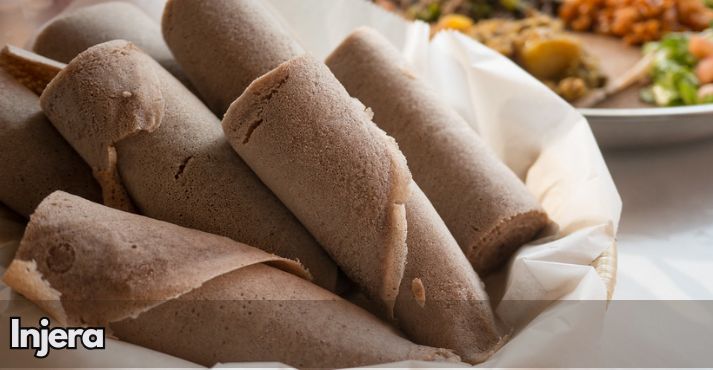
Injera holds a special place in Ethiopian cuisine, doubling as both a staple and a serving platform. This large, round, spongy flatbread is made from teff flour and relies on natural fermentation.
The resulting batter is poured in a spiral on a hot pan, cooked without flipping, and forms a soft surface covered in bubbles.
Ethiopian meals are communal. Injera is spread across a platter and topped with lentils, stews, and salads. Diners tear pieces of the bread to scoop up the food, replacing the need for utensils. Its slight sourness balances the rich, spiced flavors of the dishes it carries.
The fermentation process and shared eating practice embody the social traditions of Ethiopian mealtimes, making injera one of the most distinctive regional bread types.
Home Recipe: Injera (Home Method)
Ingredients:
- 2 cups teff flour or teff and all-purpose flour mix
- 2.5 cups water
- Pinch of salt
Steps:
- Mix flour and water. Cover the mixture loosely and let it ferment for 2–3 days.
- Stir, add salt, and pour onto a hot nonstick skillet.
- Cover while cooking until bubbles set and the surface firms. Do not flip.
8. Japan – Shokupan
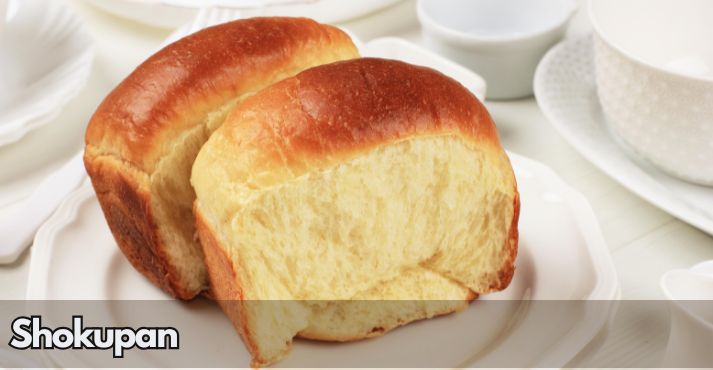
Shokupan is Japan’s signature milk bread, known for its pillowy softness and square shape. It is made using the Yudane or Tangzhong method, both of which involve cooking a portion of the flour with water to create a gel. This gives the bread its signature fluffiness and extended freshness.
Western-style bread first arrived in Japan in the late 1800s, but it was reinterpreted with local taste in mind. Japanese bakers introduced precision to the process, using high-quality ingredients, specialized kitchenware, and controlled measurements.
The result is a loaf that’s light, moist, and slightly sweet, perfect for breakfast toast or sandwiches.
Shokupan is now a common item in homes and supermarkets and remains a favorite among both children and adults. Many suppliers and home bakers use it as a base for desserts and sweet buns.
Home Recipe: Shokupan (Yudane Method)
Ingredients:
- 400g bread flour
- 80g yudane (80g flour + 80ml boiling water)
- 30g sugar
- 7g yeast
- 200ml milk
- 30g butter
- 5g salt
Steps:
- Mix all ingredients, including cooled yudane. Knead until smooth.
- Let it rise for 1 hour.
- Divide, shape, and place in a loaf pan. Proof again in 45 minutes.
- Bake at 180°C for 30 minutes.
9. Scotland – Bannocks

Bannocks are traditional Scottish flatbreads made from oats, barley, or wholemeal flour. They were originally cooked on a griddle and eaten daily in rural households. These breads were easy to make, required no yeast, and used ingredients commonly available in Scottish kitchens.
Historically, bannocks were associated with Celtic festivals and seasonal celebrations. Over time, they evolved into sweeter or enriched versions, such as the Selkirk Bannock, which includes butter, sugar, and dried fruits.
Today, they are available in both rustic forms and refined versions, sold in cafés and food and beverage shops across Scotland.
Home Recipe: Oat Bannocks
Ingredients:
- 250g oat flour or finely ground oats
- 1 tsp baking powder
- Pinch of salt
- 200ml buttermilk or water
Steps:
- Mix all dry ingredients. Add liquid to form soft dough.
- Shape into rounds about 1cm thick.
- Cook on a dry skillet until golden on both sides.
10. Russia – Borodinsky Bread
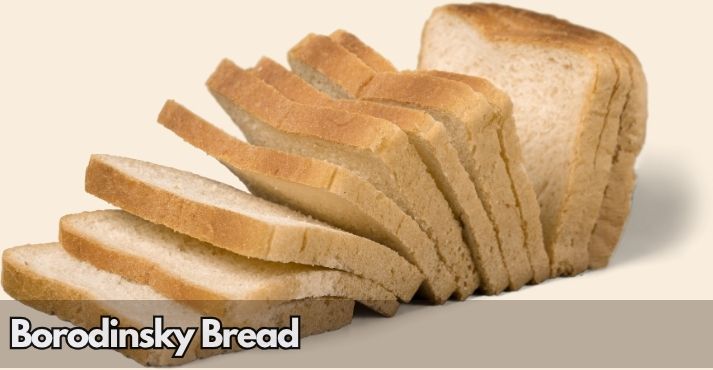
Borodinsky bread is a dark, dense rye loaf known for its earthy flavor and signature coriander topping. It uses a mix of rye flour, sourdough starter, malt extract, and molasses. The crumb is tight and slightly sticky, with a mildly sour taste and a hint of sweetness.
This bread holds a unique place in Russian history. Its name is linked to the Battle of Borodino, and it became widely available during the Soviet era. It was often produced in commercial kitchens and distributed nationwide.
Despite its heavy texture, it is often sliced thin and served with butter, fish, or cold meats. The long shelf life made it especially useful during harsh winters and for long travel.
Home Recipe: Borodinsky Bread
Ingredients:
- 400g rye flour
- 100g sourdough starter
- 250ml water
- 2 tbsp molasses or malt extract
- 1 tsp ground coriander
- Whole coriander seeds for topping
- 10g salt
Steps:
- Mix ingredients into sticky dough.
- Let it rise for 4 to 6 hours.
- Place in a loaf tin, proof for 1 hour.
- Sprinkle with coriander seeds and bake at 200°C for 50 minutes.
11. Turkey – Simit
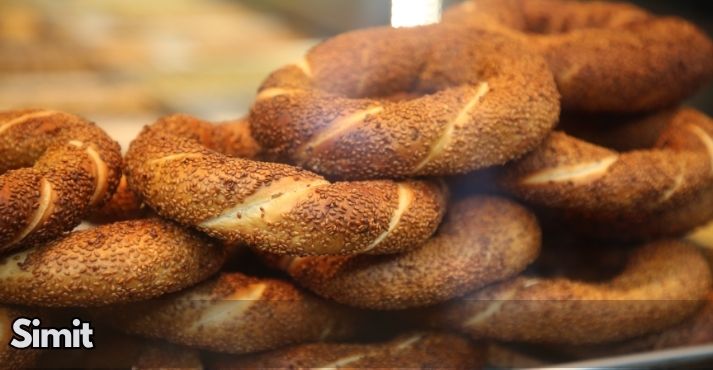
Simit is a sesame-coated, ring-shaped bread that is popular throughout Turkey. Vendors sell it fresh on street corners, balancing large trays on their heads or pushing carts through neighborhoods. Its golden crust is crisp, while the inside remains soft and chewy.
It is made from a simple yeast dough, shaped into rings, dipped in molasses water, and rolled in sesame seeds.
Simit is typically eaten for breakfast or as a snack, often accompanied by white cheese, olives, or sweet tea. The bread is part of both everyday meals and casual social gatherings.
You’ll find it in every city, whether from small bakeries or bustling street stalls, and it remains one of the most recognizable handmade breads around the world.
Home Recipe: Simit
Ingredients:
- 500g bread flour
- 300ml water
- 7g yeast
- 1 tsp sugar
- 10g salt
- 2 tbsp molasses
- Sesame seeds for coating
Steps:
- Mix and knead the dough. Let it rise for 1.5 hours.
- Divide and roll into long ropes. Form rings.
- Dip in diluted molasses, coat in sesame seeds.
- Bake at 220°C for 18–20 minutes.
Cultural Practices and Bread-Making Rituals

Bread-making is often more than just baking. It brings people together, preserves tradition, and marks special occasions. In many places, the process itself carries meaning and a sense of rhythm.
1. Family and Community Rituals
In Germany, it is common for families to maintain a weekly sourdough ritual. Many bakers keep and feed their starter together, sometimes folding the dough as a shared moment. The practice builds a sense of time and nurture around the oven.
This shared activity, often described in home baking blogs, shows how sourdough routines can be both practical and emotional, influencing how the week unfolds.
2. Religious and Cultural Observances
One powerful example is the Jewish tradition of making challah for Shabbat. Before kneading, a small portion of dough is separated and blessed as a gift, continuing an ancient commandment.
The braided loaves are placed on Sabbath tables in mitzvahs that reflect both spiritual devotion and family continuity.
In North America, groups like the Sisterhood of Salaam Shalom have organized events where Jewish and Muslim women bake challah together. These gatherings use bread-making to encourage cultural exchange, unity, and friendship.
3. Other Cultural Connections
Bread often arrives alongside seasonal celebrations. Handmade breads around the world, from challah to sourdough, are found in religious, harvest, or family commemorations.
Though they use different kitchenware or outdoor ovens depending on the setting, the act remains rooted in history and shared identity.
Crafting cultural bread recipes ties people to their past. When kids learn a grandmother’s recipe or neighbors bake together, bread carries memories and brings people closer. It’s not just about food; it’s about showing care, community, and tradition.
What Connects Artisan Breads Across the Globe
Across countries and climates, many breads share the same fundamental principles: simple ingredients, time, and hands-on effort. Despite the differences in shape, flavor, or method, the foundation remains consistent.
Natural fermentation is one of the clearest links. In places like France, Germany, and Ethiopia, bakers use starters that grow over time, helping dough rise slowly while building deep flavor. This process works without commercial yeast and has been passed down for generations.
Hand-kneading is another shared step. Whether forming loaves, shaping flatbreads, or folding enriched dough, this method lets the baker feel each stage of the process. Even in professional kitchens, many still rely on touch and timing rather than machines.
The core values, like patience, skill, and simplicity, connect these breads across borders. While a Mexican bolillo and a Japanese shokupan look nothing alike, both are part of a long-standing bread tradition that values attention over automation. This is what gives international bread culture its strength and meaning.
In regions known for other baked goods like puff pastry and phyllo dough, handmade breads still appear regularly at meals. Bread remains a meaningful part of daily life and community traditions.
Conclusion
Artisan bread carries a story. Each loaf, whether soft or crusty, simple or rich, holds a connection to the land where it was made and the people behind its recipe.
These breads are more than food. They are part of family meals, local traditions, and community life that go back generations.
By exploring breads from different cultures, we get a glimpse into how others live, cook, and gather. From teff flour in Ethiopia to wood-fired loaves in France, the variety shows how each region turns local ingredients into something essential and meaningful.
Try baking or tasting a bread from another part of the world this week. Whether it’s warm naan, fluffy shokupan, or dark Borodinsky rye, let it be an invitation to learn through flavor and celebrate the traditions behind it.

